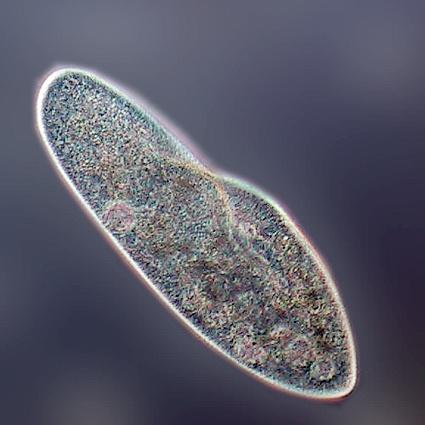Paramecium caudatum is shown on the picture. Paramecium is an unicellular ciliate protozoon, its size range from about 50 to 350 μm in length. Simple cilia cover the body, which allow the cell to move with a synchronous motion.
The paramecium contains cytoplasm, trichocysts, the gullet, food vacuoles, the macronucleus, and the micronucleus. The macronucleus contains three whole copies of the genom and controls the non-reproductive cell functions such as metabolism.
Paramecia feed on microorganisms like bacteria, algae, and yeasts. To gather its food, the paramecium uses its cilia to sweep up food along with some water into the cell mouth after it falls into the oral groove. The food goes through the cell mouth into the gullet. When enough food has accumulated at the gullet base, it forms a food vacuole in the cytoplasm, and travels through the cell, through the back end first. As it moves along, enzymes from the cytoplasm enter the vacuole to digest the contents, digested nutrients then going into the cytoplasm, and the vacuole shrinks. When the vacuole reaches the anal pore, it ruptures, expelling its waste contents to the exterior. (Wikipedia)
Taxonomic classification:
- Domain: Eukaryota
- Kingdom: Protista
- Phylum: Ciliophora
- Class: Ciliatea
- Order: Peniculida
- Family: Parameciidae
- Genus: Paramecium
On the next picture you will find a the cell with the organelles of Paramecium.
http://en.wikipedia.org/wiki/Paramecium
